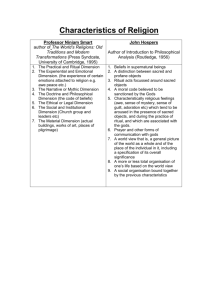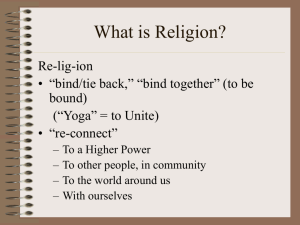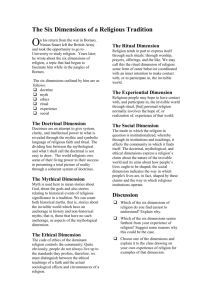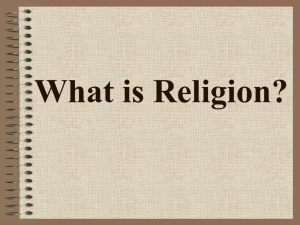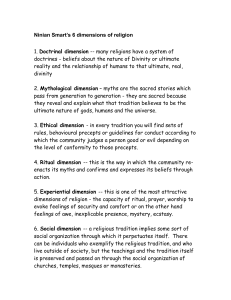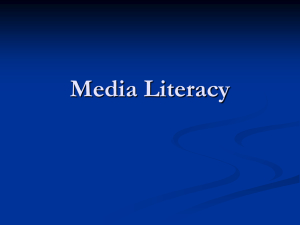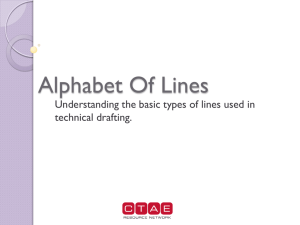Chapter 1 Living in a Media World
advertisement
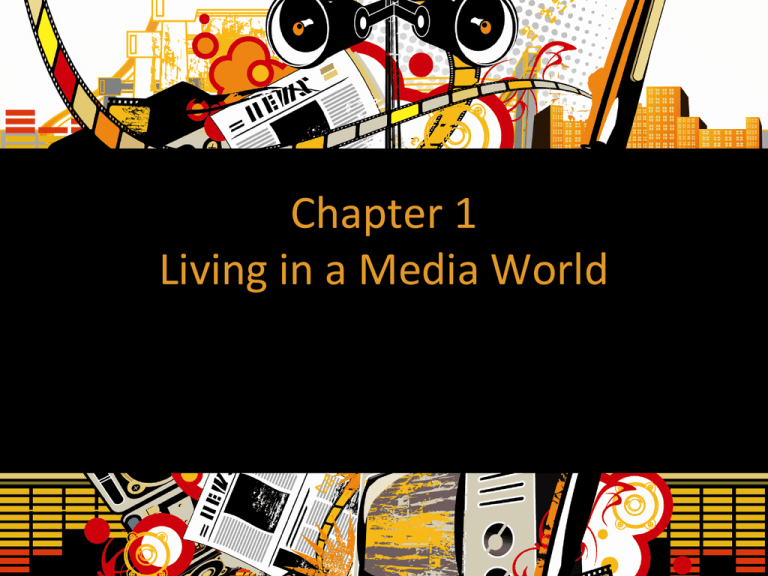
Chapter 1 Living in a Media World What is Communication? Communication is how we socially interact at a number of levels through messages. Types of Communication • Intrapersonal Communication: Communication you have with yourself • Interpersonal Communication: Communication between two people • Group Communication: Communication where one person is communicating with an audience of two or more people • Mass Communication What is Mass Communication? • When an individual or institution uses technology: – To send messages – To a large, mixed audience, most of whose members are not known to the sender. Players in the Mass Communication Process • Sender The corporation or individual responsible for the message being sent. • Message The content being transmitted by the sender to the receiver. • Channel The medium used to transmit the message. • Receiver The audience for the mass communication message. Mass Communication Models – Transmission Model (SMCR) A dated model useful for identifying players in the mass communication process. – Ritual Model Media use is an interactive ritual by audience members. Looks at how and why audiences consume messages. Mass Communication Models – Publicity Model Looks at how media attention makes a person, concept, or thing important. – Reception Model Looks at how audience members derive and create meaning out of media content. Evolution of the Media World • 1100-1400 AD: Pre-mass media communication networks • 1450s: Development of movable type, printing • 1814: Steam-powered printing press • 1844: First U.S. telegraph line • 1866: First trans-Atlantic telegraph line Evolution of the Media World • • • • • 1880s: Invention of the gramophone Late 1800s: Development of radio 1890s: Development of motion pictures 1939: First television broadcasts 1990s: Internet becomes a channel of mass communication Media Literacy Audience members’ understanding of: • The media industry’s operation • The messages delivered by the media • The roles media play in society • How audience members respond to these media and their messages Basic Dimensions of Media Literacy • Cognitive Dimension Ability to intellectually process information communicated by the media. • Emotional Dimension Understanding the feelings created by media messages. Basic Dimensions of Media Literacy • Aesthetic Dimension Interpreting media content from an artistic or critical point of view. • Moral Dimension Understanding the values of the medium or the message. Seven Truths “They” Don’t Want You To Know About the Media • Truth One: The media are essential components of our lives. • Truth Two: There are no mainstream media (MSM). • Truth Three: Everything from the margin moves to the center. • Truth Four: Nothing’s new: Everything that happened in the past will happen again. Seven Truths “They” Don’t Want You To Know About the Media • Truth Five: New media are always scary. • Truth Six: Activism and analysis are not the same thing. • Truth Seven: There is no “they.”


